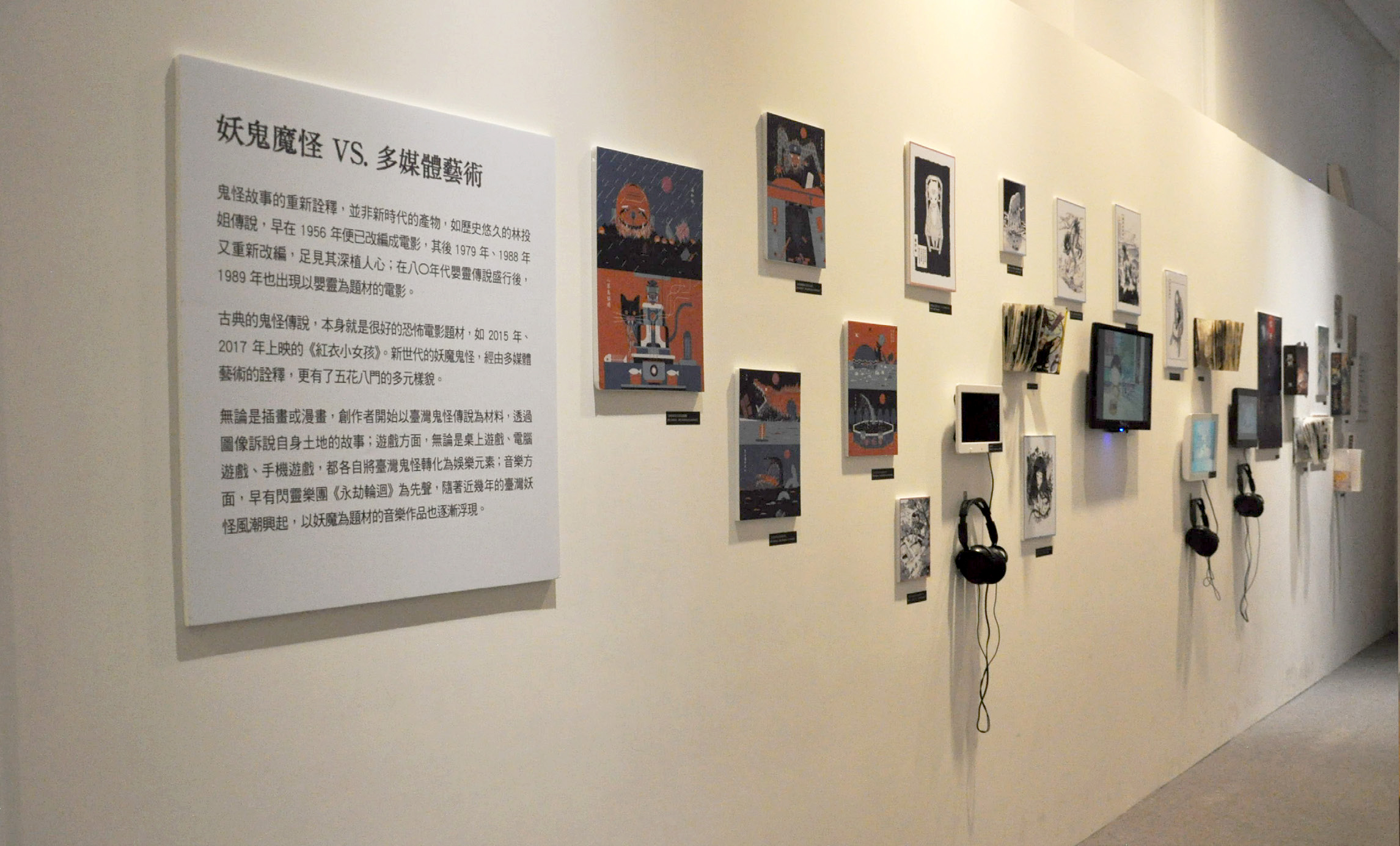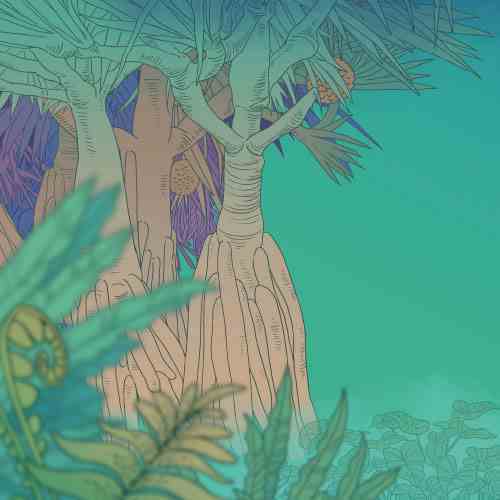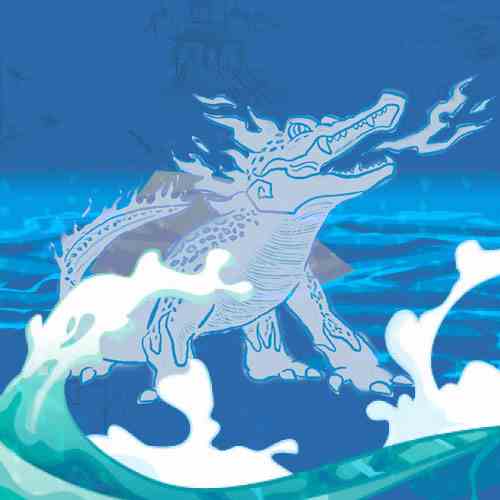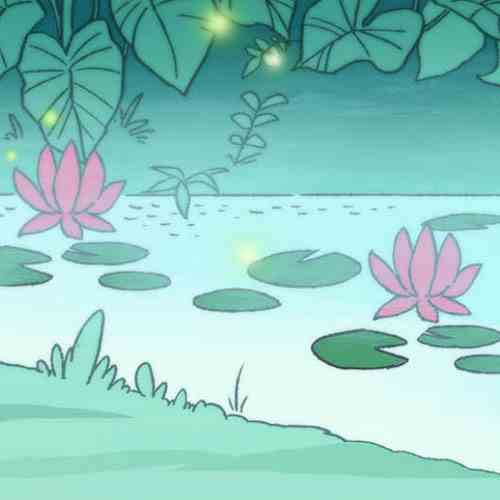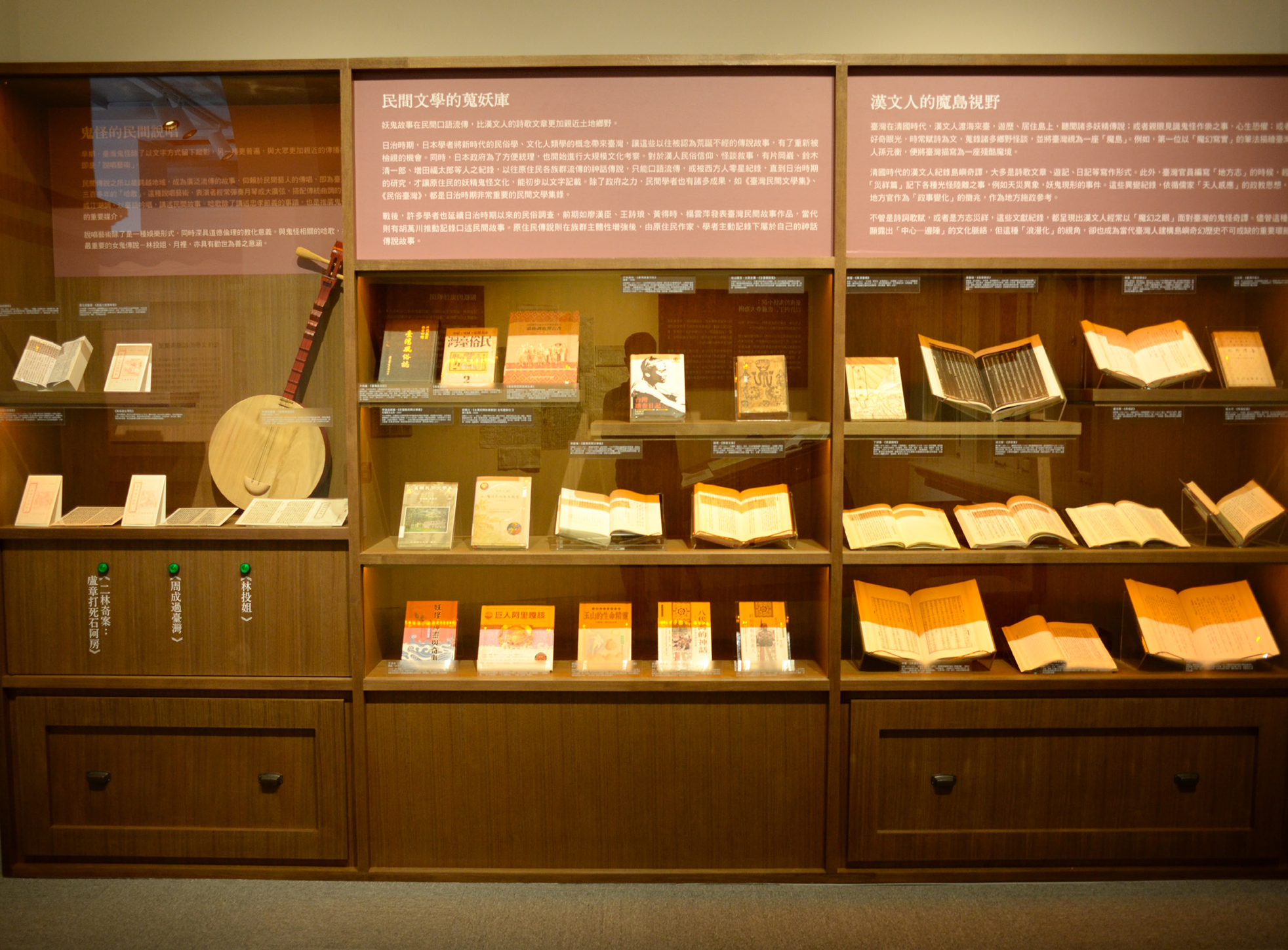
Postmodern Mixture of Ghosts and Monsters|Field Studies Relating to Formosan Monsters and Ghosts|New Creations of Local Monsters|Supernatural Beings VS. Multimedia Art
Stories of the paranormal have tickled and prickled the imaginations of Taiwanese for centuries. They crystallize the darker and mustier corners of local culture and traditions. The stories that have managed to survive into the present and get written down as literature are truly rare and precious pieces of historical fantasy that have tremendously enriched the imaginative character of Taiwanese literature.
Globalization in the postwar era has also opened the doors to foreign ideas about and stories of the paranormal. This has added new dimensions and diversity to local stories in this genre and even spawned entirely new hybrid subgenres. Stories have also merged with modern consumer culture, becoming packaged and promoted for mass consumption.
The nativization movement of the late 1980s encouraged authors and scholars both to revisit and to reexamine Taiwan's paranormal fables and their cultural underpinnings. Moreover, modern Taiwanese creative literary efforts as well as historical novels and popular fiction have increasingly enriched this realm and further explored its full potential. Furthermore, the infusion of other media such as illustration, music, and images are highlighting the diversity of modern Taiwanese paranormal fiction.

Postmodern Mixture of Ghosts and Monsters
After the Second World War, Sima Zhongyuan carried on the tradition of ghost storytelling, promoting their widespread popularity. For example, "Ghost Stories in the Army" became a hit in the 1990s. The UNCLE SUN TELLS GHOST STORIES series, adapted from Chinese and Western ghost stories, is a common childhood memory of those born in the 1980s.
Beyond the influence of Chinese tradition, Western and Japanese ghost stories also began to affect the creation of ghost literature in Taiwan following the infiltration of pop culture. In the 1960s, translated Western Gothic novels began to appear on Taiwan's literature market and peaked during the 1980s and 1990s. The large amount of Gothic romance novels and horror movies, including iconic Alfred Hitchcock films, truly left a deep impression in Taiwanese people's hearts. Japanese comics accounted for the largest share of Taiwan's reading market in the 1970s, with horror comics being one of the main contributors. In the 1990s, Japanese ghost tales were introduced to Taiwan through fiction novels and movies, elevating the level of thrill and excitement to the next level. Another important branch of horror movies that contributed to Taiwan's later literary creation came from Hong Kong, especially from zombie and ghost bride-themed movies, which gain popularity in the 1980s and formed an alternative subculture with their unique styles.
Today, ghost stories have expanded their readership to children's books and handy books, reflecting a clear trend toward commodification.
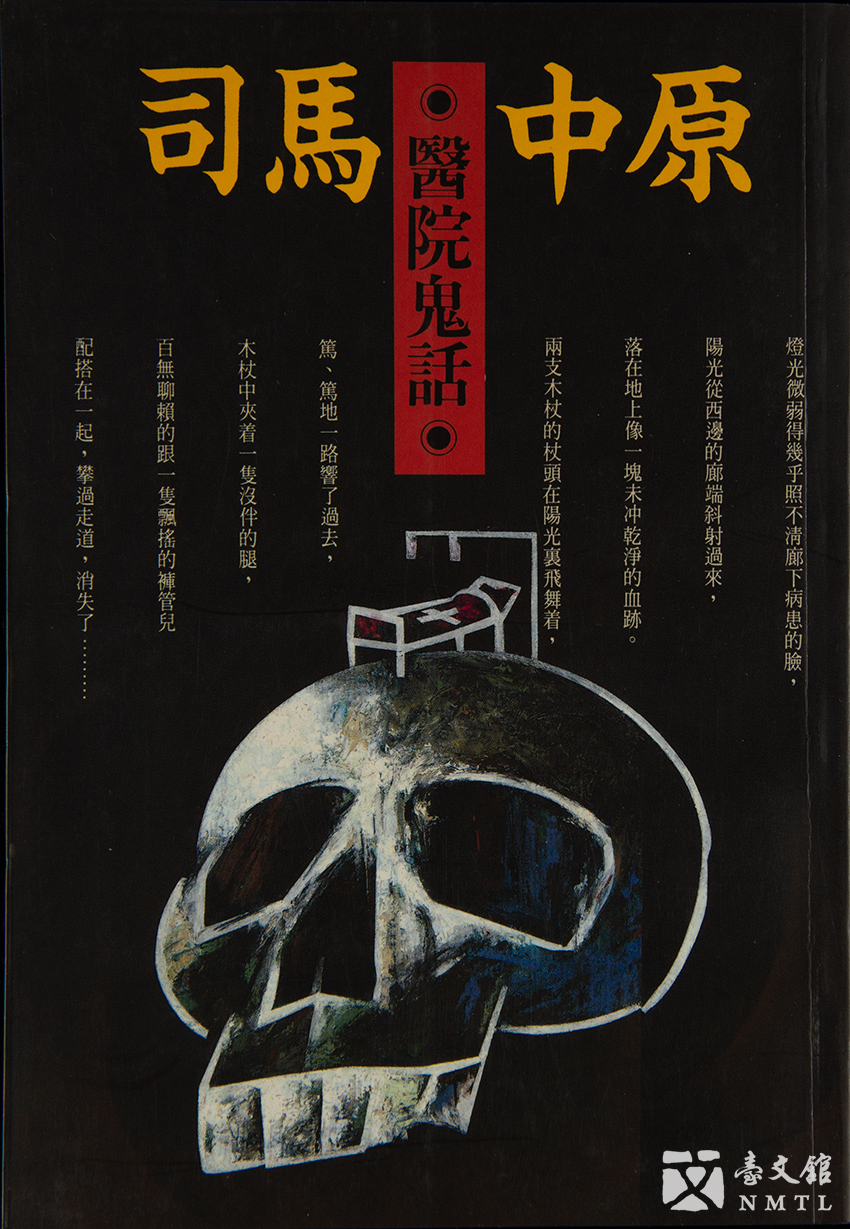
▶︎ Sima Zhongyuan. HOSPITAL GHOST STORIES. Crown Publishing, 1994. (From the National Museum of Taiwan Literature permanent collection / Donated by Sima Zhongyuan)
Sima Zhongyuan (1933-2024), a native of Huaiyin, Jiangsu, moved to Taiwan with the KMT Army in 1945. After his military discharge in 1962, he became a full-time writer on topics covering nostalgia, wuxia (martial adventures in ancient China), and paranormal stories. He is especially renowned for his rural ghost stories, and published the "Ghost Stories" series in the 1980s, including GHOST TALK (1988), VAMPIRE ZOMBIE (1989), and THE SOUL-HIDING VAT (1990). Sima also hosted the radio drama "Midnight Bizarreries," cementing his image as "Sima Zhongyuan the ghost storyteller." His works are considered "the genesis of Taiwan's horror novels." The HOSPITAL GHOST STORIES center on strange stories set in hospitals, revealing modern people's fear for death.
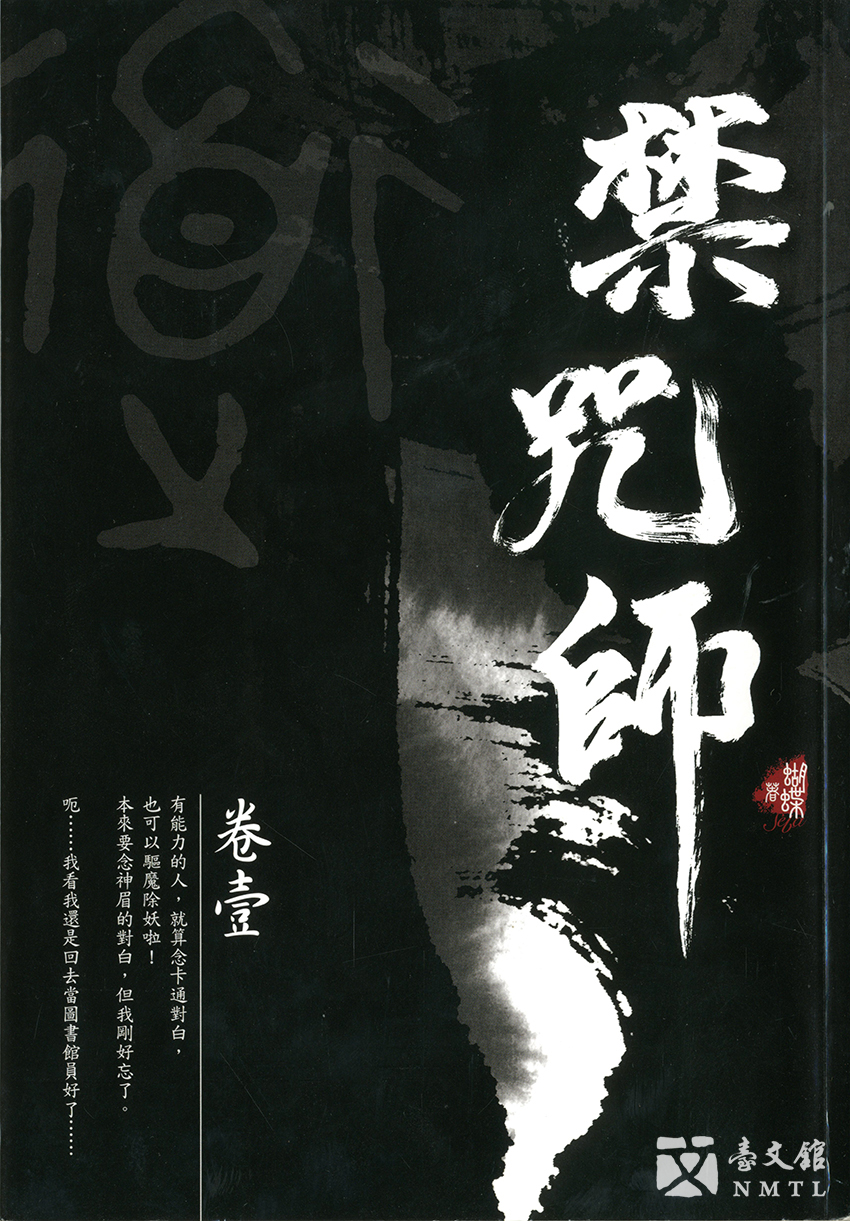
▶︎ Seba. FORBIDDEN SORCERER, Vol. 1. Elegant Books. 2016 2nd edition 1st printing.
Seba (1968-) is a novelist who emerged on the internet in the 1990s. Her early works were about urban women's stories. After becoming a full-time writer in 2002, she began to create supernatural novels with a wolfish style across multiple genres, including fantasy, wuxia, and horror.
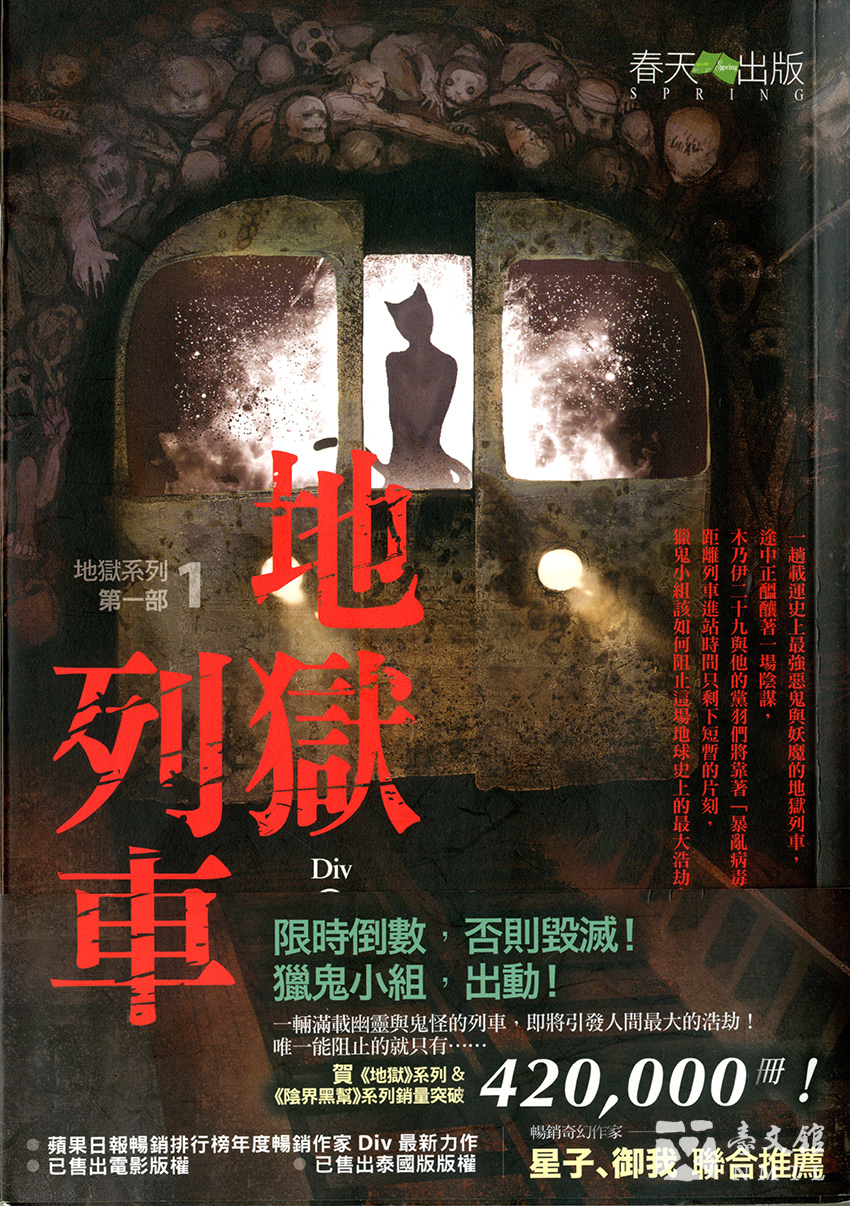
▶︎ Div. HELL TRAIN. Bookspring Taiwan. 2012 1st edition 41st printing.
Div (1978-) is a novelist whose styles span fantasy through horror. In 2005, he wrote DRAWING THE JOKER for the "Handy Books of Tomorrow" series published by Tomorrow Studio. The book is a classic campus horror novel combining campus legends, mysterious deaths, and eerie plot twists. Since then, Div has focused on creating horror and supernatural stories.
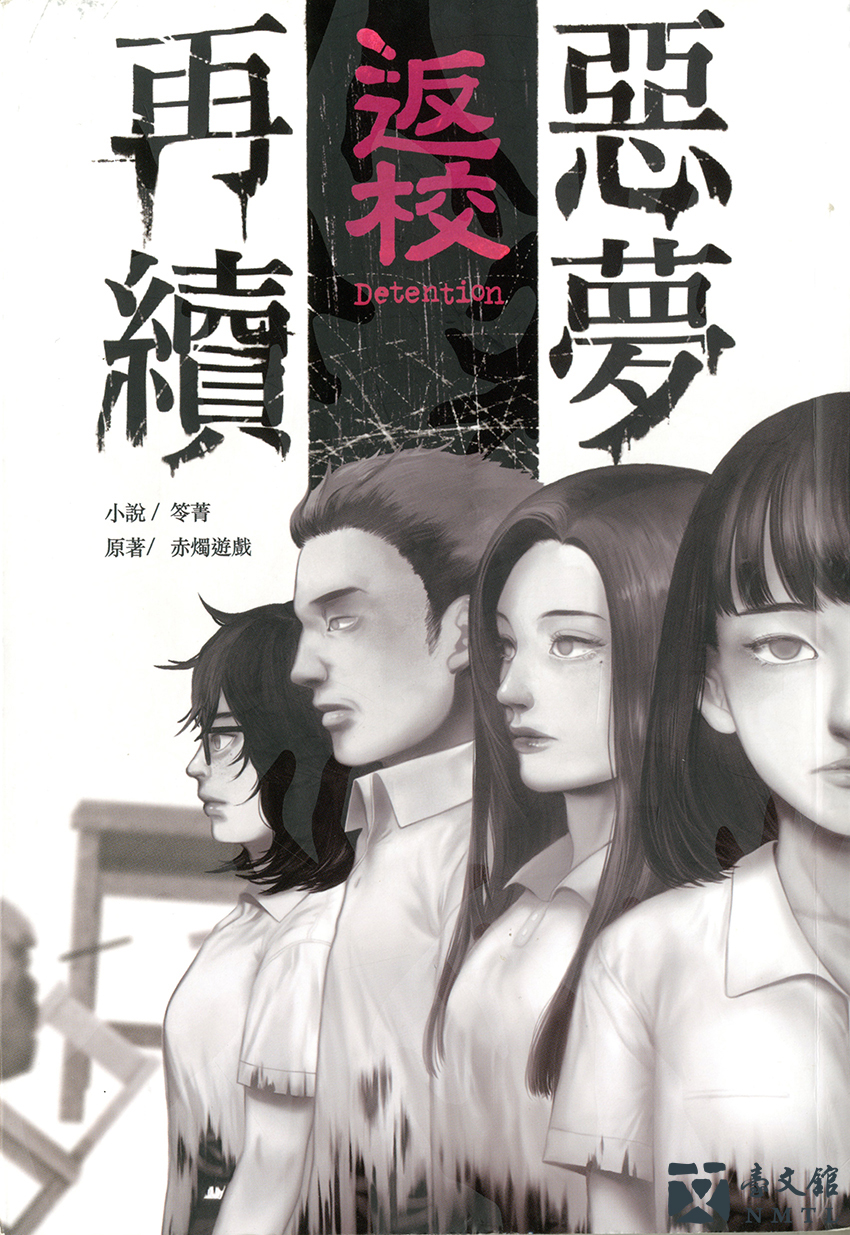
▶︎ Ling Jing. DETENTION. Sharp Point Press, 2017.
Ling Jing is a novelist specializing in the paranormal and horror genres. She broke onto the scene with the series "Convenient Books of Tomorrow" and first earned fame for her stories set in horror locations around the world, which she published in the series "Ghostly Travelogues". She has since built on this foundation with her "Urban Tales" series and her bestselling "Books for Devil Children" series. In 2017, Ling Jing partnered with video-game developer Red Candle Games to publish DETENTION: THE NIGHTMARE CONTINUES as a companion to the Red Candle video game "Nightmare".
Field Studies Relating to Formosan Monsters and Ghosts
In recent years, there has been a growing wave of research on monsters, ghosts, and deities in Taiwan. Many domestic scholars and creative writers have begun to focus on the paranormal culture of the island, striving to uncover the ghostly history that was once hidden in the dark and to re-examine these tales from a contemporary perspective. For example, THE ANTHROPOLOGICAL IMAGINATION OF MÔO-SÎN-Á investigated Taiwan's beliefs regarding Môo-sîn-á; ON MONSTERS investigated stories of monsters and ghosts in local culture; and GRIM TAIWAN compiled the stories of monsters and ghosts found in ancient literature.
In the rising wave of scholarly interest regarding monsters and ghosts, researchers have not only adopted the folklore and anthropology studies conducted during the Japanese Colonial Period, but also further emphasized the creative and narrative processes involved in local monsters. In compiling this data, they have recapitulated the cultural context of Taiwan's monsters and ghosts during the past centuries, and, together with information gathered from field studies, constructed a Formosan world of monsters and ghosts from a fresh perspective.
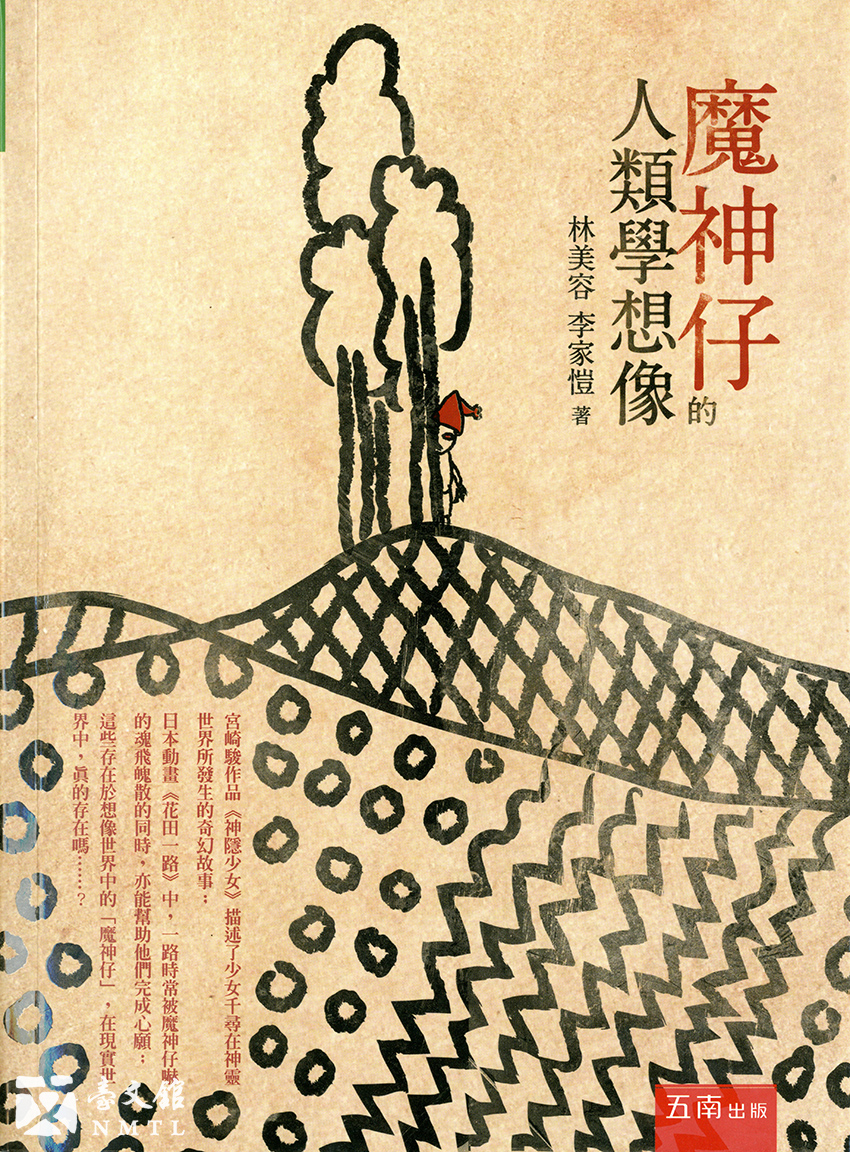
▶︎ Lin Mei-rong & Li Jia-kai. THE ANTHROPOLOGICAL IMAGINATION OF MÔO-SÎN-Á. Wunan, 2018 1st edition 4th printing. (Collection of the National Museum of Taiwan Literature)
Lin Mei-rong (1952-) is an advocate for Taiwan cultural history and religious studies, a current professor at the Institute of Religion and Humanity at Tzu Chi University, and a researcher at Academia Sinica. In 2014, she co-wrote THE ANTHROPOLOGICAL IMAGINATION OF MÔO-SÎN-Á with Li Jia-kai. This was the first monograph dedicated to the study of Môo-sîn-á. It was also a modern pioneering effort in the academic study of Taiwan's monsters, attempting to construct the local metaphysical culture using rigorous scientific methods and theories.
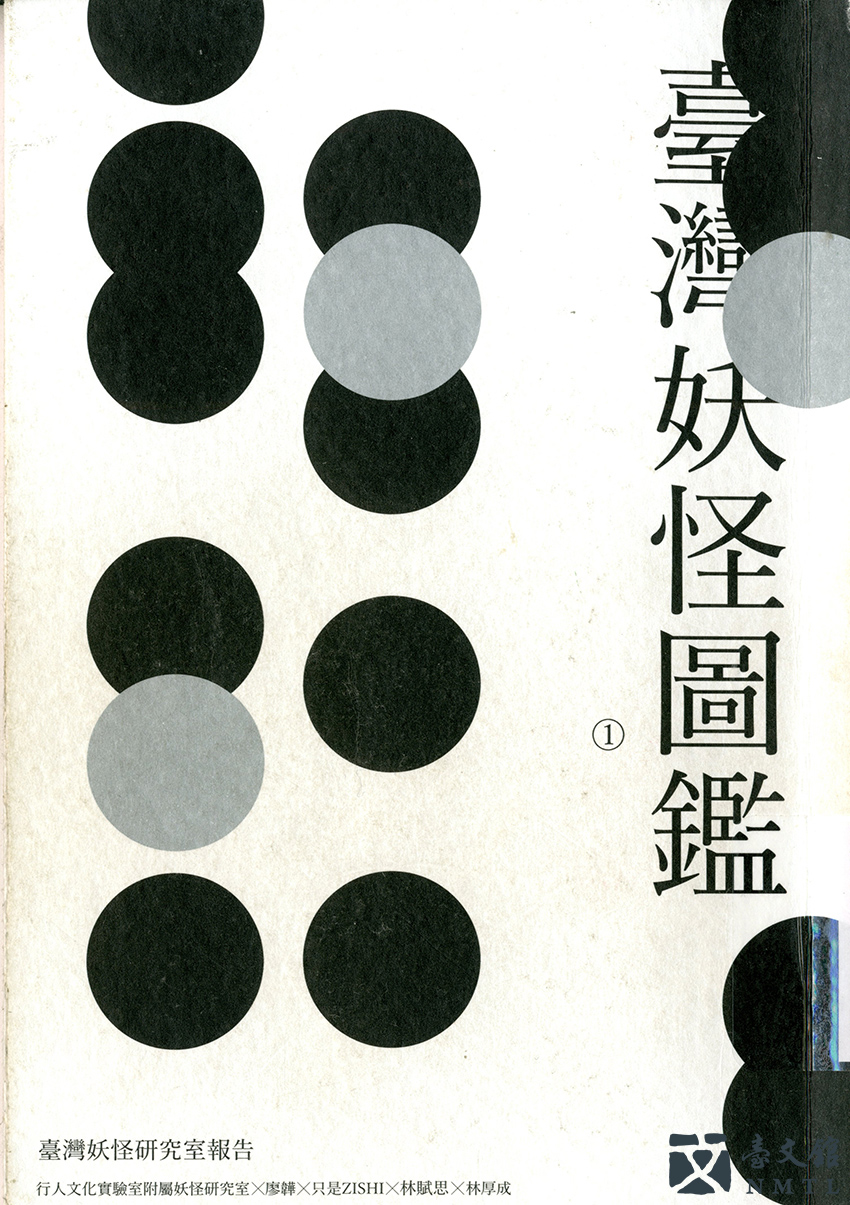
▶︎ Flâneur Culture Lab. TAIWAN MONSTER RESEARCH REPORT. Editions du Flâneur, 2015. (Collection of the National Museum of Taiwan Literature)
Editions du Flaneur was established in 1998 and later changed its name to Flâneur Culture Lab. It is committed to the development of the cultural creativity industry through a diverse range of book projects. TAIWAN MONSTER RESEARCH REPORT is a trailblazer in Taiwan's new-century monster studies. Although mythical creatures have been documented in ancient books and literatures, they were never treated seriously. The REPORT diverges from the traditional focus on "ghosts" and contextualizes these unique Taiwanese paranormal tales through the broader lens of "monsters" for the first time.
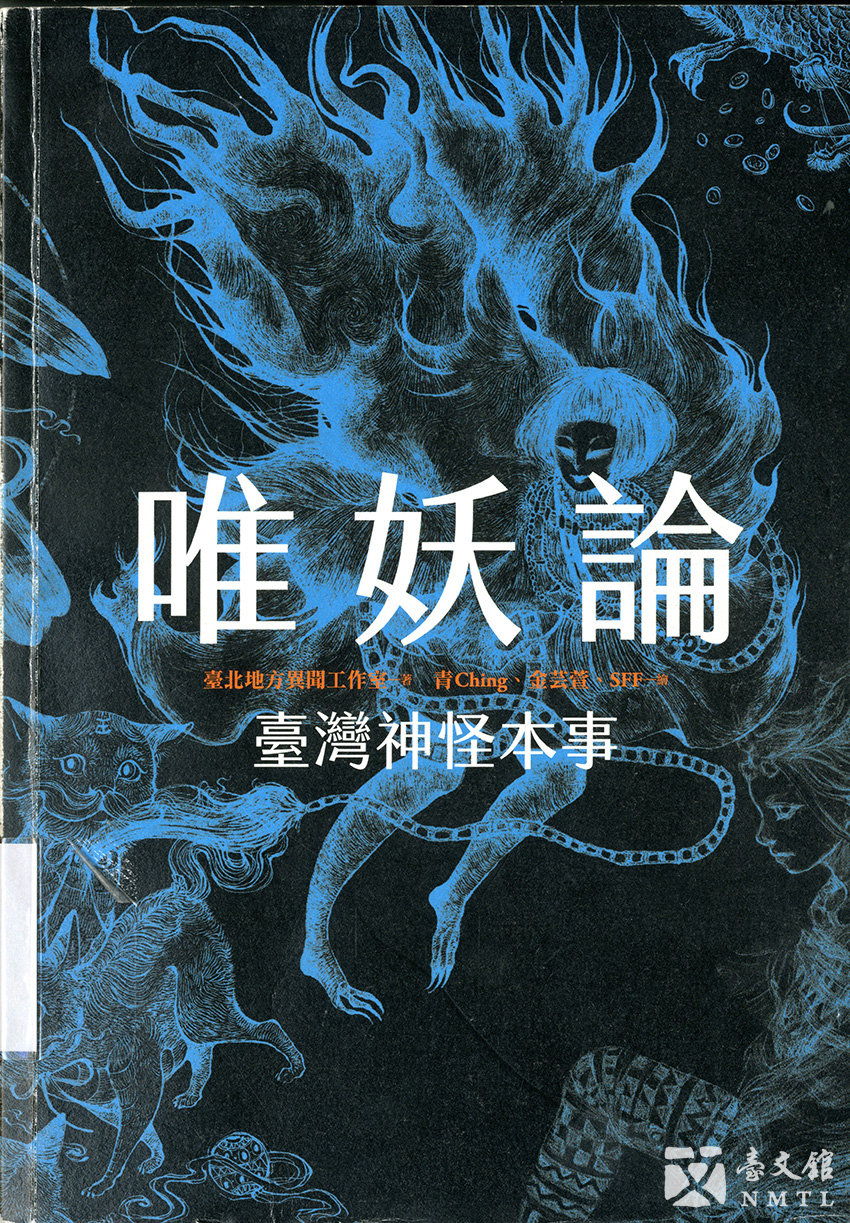
▶︎ Taipei Legend Studio. ON MONSTERS. Kiwifruit Studio. 2017 1st edition 4th printing. (Collection of the National Museum of Taiwan Literature)
The members of Taipei Legend Studio come from the fantasy clubs of National Chengchi University and National Taiwan University and include Xiaoxiangshen (Luo Chuan-qiao), Gao Pei-yun, and Qingyou (Xu Ya-ting). They banded together under a unifying concept of "urban necromancy" and are dedicated to surveying Taiwan's paranormal world and designing reality games. THE DOMINEERING MONSTERS OF TAIPEI CITY (2015) fuses Taiwanese folklore with urban history for the first time, creating a mysterious parallel universe where monsters reside. The studio also published ON MONSTERS, a book based on investigations of Taiwan's metaphysical culture, in 2016 and launched the fieldwork project FINDING MONSTERS DIARY on Taiwan's monsters.
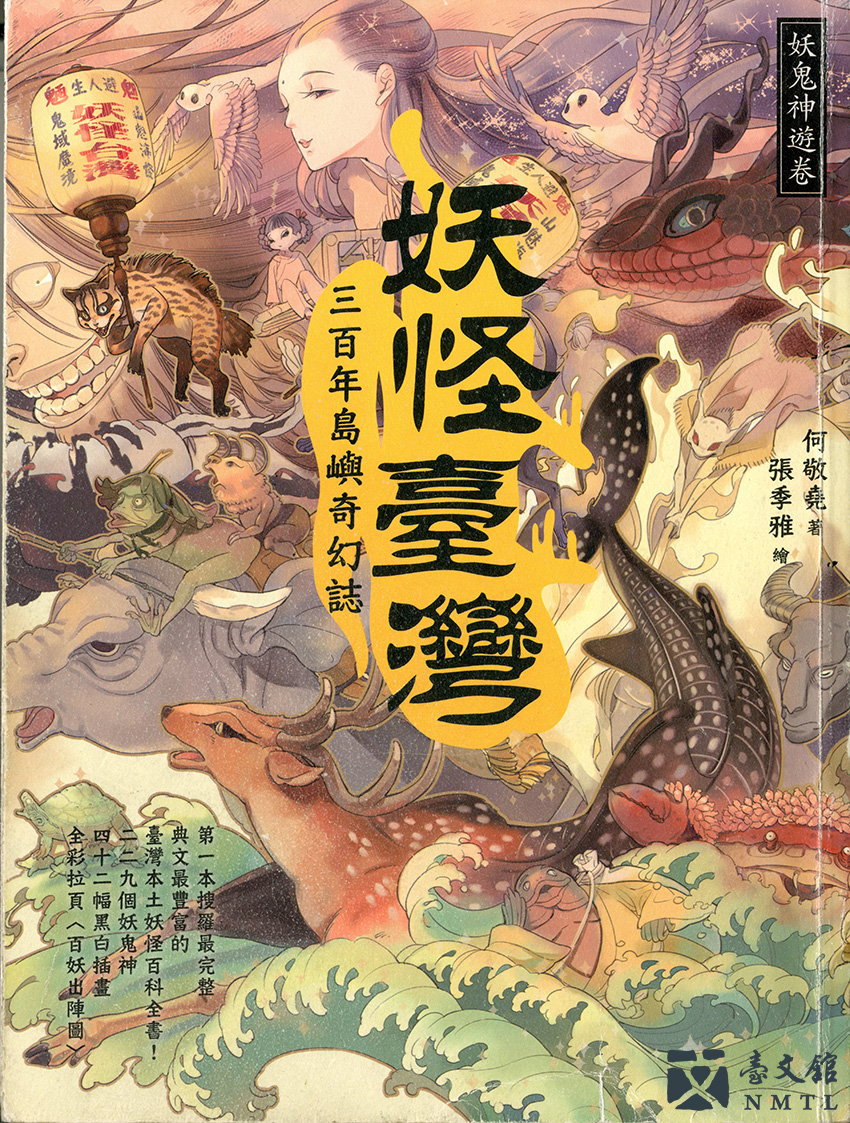
▶︎ Ho Ching-yao. GRIM TAIWAN: THREE CENTURIES OF DARK IMAGININGS. Linking Publishing, 2017. (Collection of the National Museum of Taiwan Literature)
Novelist Ho Ching-yao (1985- ), whose work currently covers fantasy novels, historical stories, and historical surveys, holds a bachelor's degree from National Tsing Hua University's Institute of Taiwan Literature. He authored MAZE OF MONSTERS, a collection of paranormal tales, in 2016 and INTONING MONSTERS OF FORMOSA, a work centered on imaginative paranormal creatures, in 2018. His recent focus on collecting and reprinting local Taiwanese legends resulted in his 2017 work GRIM TAIWAN: THREE CENTURIES OF DARK IMAGININGS, which features stories of the odd and unusual that were written down / published between 1624 and 1945.
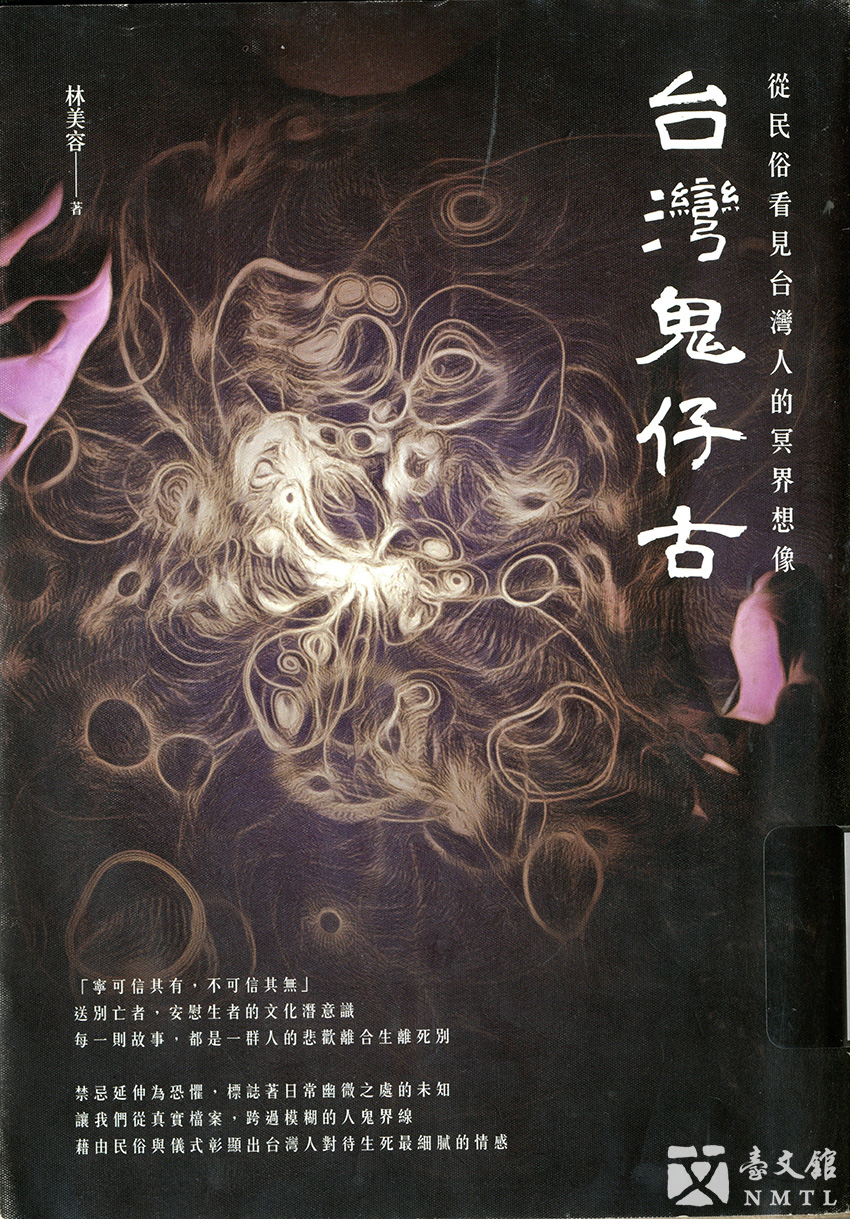
▶︎ Lin Mei-rong. TAIWAN GHOST TALES. Moon Bear Publishing House, 2017. (Collection of the National Museum of Taiwan Literature)
Lin Mei-rong (1952-) is a cultural anthropologist and researcher in Taiwanese cultural history and religion. She has conducted extensive fieldwork and interviews across Taiwan for her research on the legend of the Môo-sîn-á. Despite her aim of documenting stories about the Môo-sîn-á, Lin has also learned about countless general ghost tales, which she has compiled into this book.
New Creations of Local Monsters
Driven by localization trends, writings on unique Taiwanese monsters represent a target that contemporary creators strive towards.
In belle lettres, Wang Jia-xiang created a brand-new application of paranormal elements based on historical novels. Gan Yao-ming and Lian Ming-wei also wrote about countryside memories using local strange tales. In mass literature, many pop writers have incorporated Taiwan's unique paranormal tales into their work when writing about local culture. For instance, Xing-zi attempted to integrate local customs with fantasy fiction. Indigenous writers also combined magical elements such as monsters and witchcraft into their works of fiction to amplify the unique characteristics of indigenous literature.
Furthermore, new-generation monster literature has expanded into cross-industry cooperation. For example, Taipei Legend Studio's wildly popular LEGEND HAS IT is not only a novel but also a board game. Ho Ching-yao's FORMOSA'S MONSTER SONGS is a cross-domain cooperation project joining literary and music genres that will also soon be launched as a mobile game app.
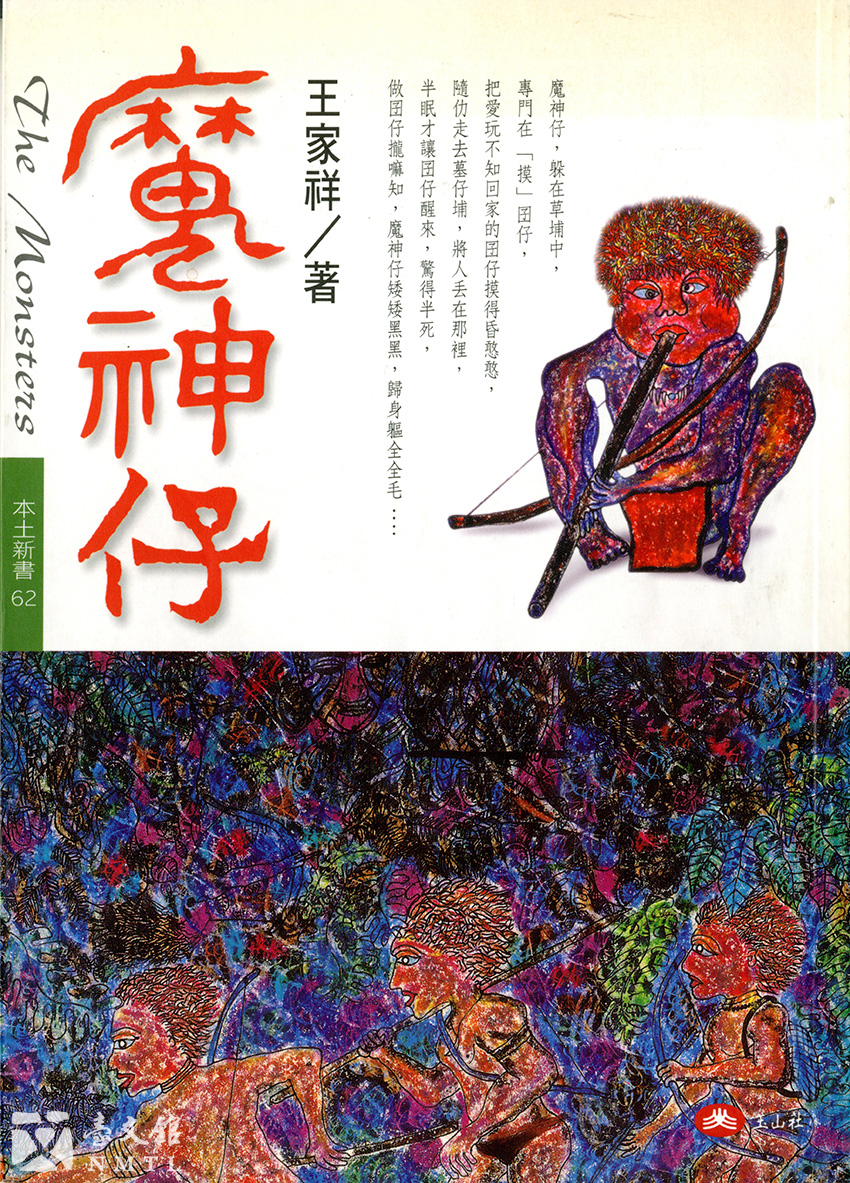
▶︎ Wang Jia-xiang. MÔO-SÎN-Á. Yushanshe, 2002. (Collection of the National Museum of Taiwan Literature)
Wang Jiaxiang (1966-), born in Ganshang, Kaohsiung, is a novelist and nature prose writer working under the pen name Yunshui and Li Xiang. He regularly engages in conservation work in Taiwan. He is the author of CIVILIZED WILDERNESS (1990) and PRAYERS FOR NATURE (1992), which advocate for sustainability and environmentalism, and has won China Times Literature Award and United Daily News Literature Award prizes. Since the 1990s, he has published several historical novels such as MYSTERY OF THE DWARFS (1996), DAOFENG INLAND SEA (1997), and MÔO-SÎN-Á (2002), blending Taiwan's history, culture, and mythology in his explorations of environmental and ecological issues. This book is a work of fiction about the rise and fall of the Negrito that draws on his historical imaginings about this prehistoric tribe.

▶︎ Gan Yao-ming. KILLING THE GHOST. Aquarius Culture, 2009. (Collection of the National Museum of Taiwan Literature)
Gan Yao-ming (1972-) received a master's degree in Creative Writing and English Literature from National Dong Hwa University. He works as a novelist and a children's creative writing teacher. His works on the occult, religion, and legends reflect significant Hakka influence stemming from his upbringing in Miaoli - an area replete with rural myths and narrative history. Gan deftly employs rhetorical devices like metaphors and personification to create explosive, dramatic tension in his novels. Set in the Japanese Colonial Period, the historical fiction KILLING THE GHOST employs magical realism techniques to narrate the fate of Pa, a teenage boy from Guanniuwo with psychic powers, and the chronological history of the Hakkas, Mins, and indigenous people.
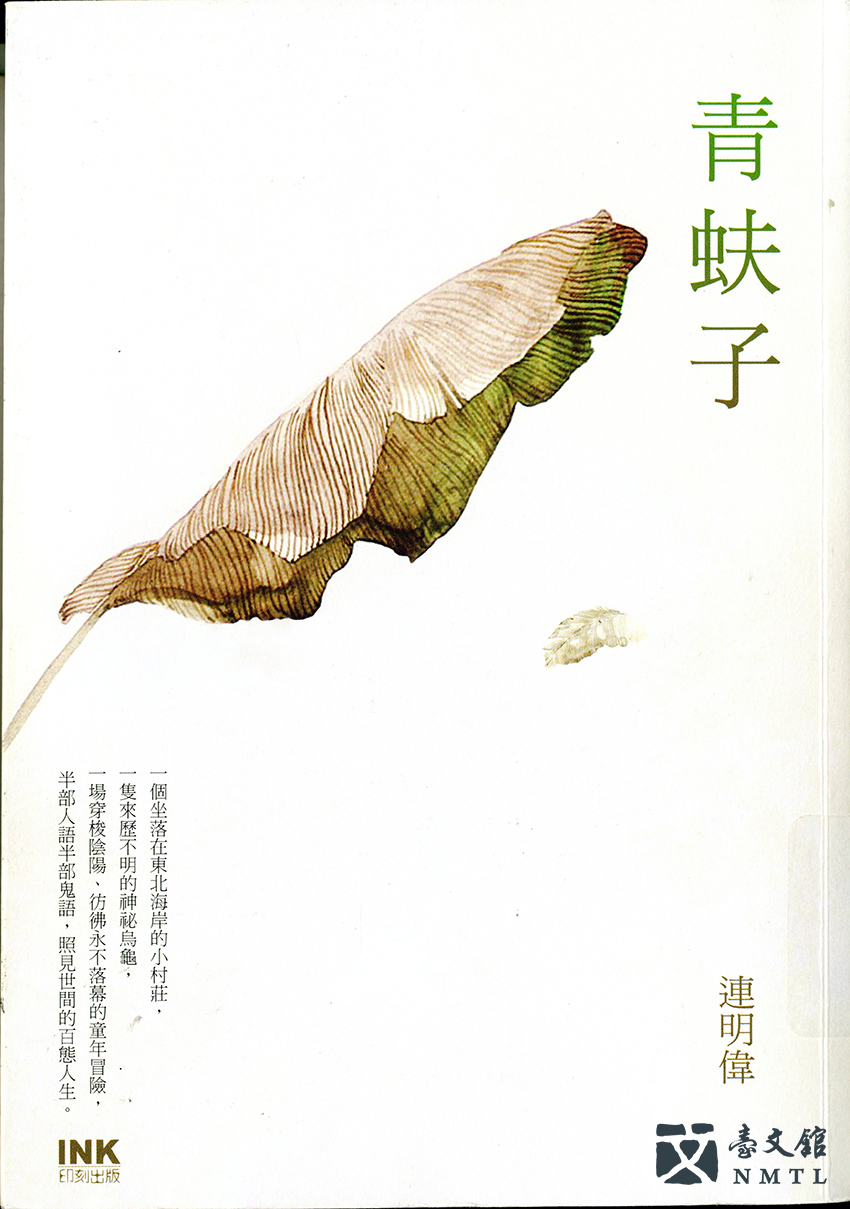
▶︎ Lian Ming-wei. QING FU ZI. Ink Literature, 2016. (Collection of the National Museum of Taiwan Literature)
Lian Ming-wei (1983-), who earned a master's degree from the Institute of Creative Writing and English Literature from National Dong Hwa University, is a novelist who was named Best New Novelist in the United Daily News Literature Award and won the LinRungSan Literature Award. Having worked as a Mandarin teacher at Philadelphia High School in the Philippines, Lian summarized his overseas experiences in a long-form novel GUERRILLA WAR ON THE TOMATO STREET (2015). In QING FU ZI, Ming-wei incorporates local Taiwanese cultural elements and draws heavily upon magical rural legends and hearsay. The book contemplates local traditions and death by alternating between the perspectives of children and adults.
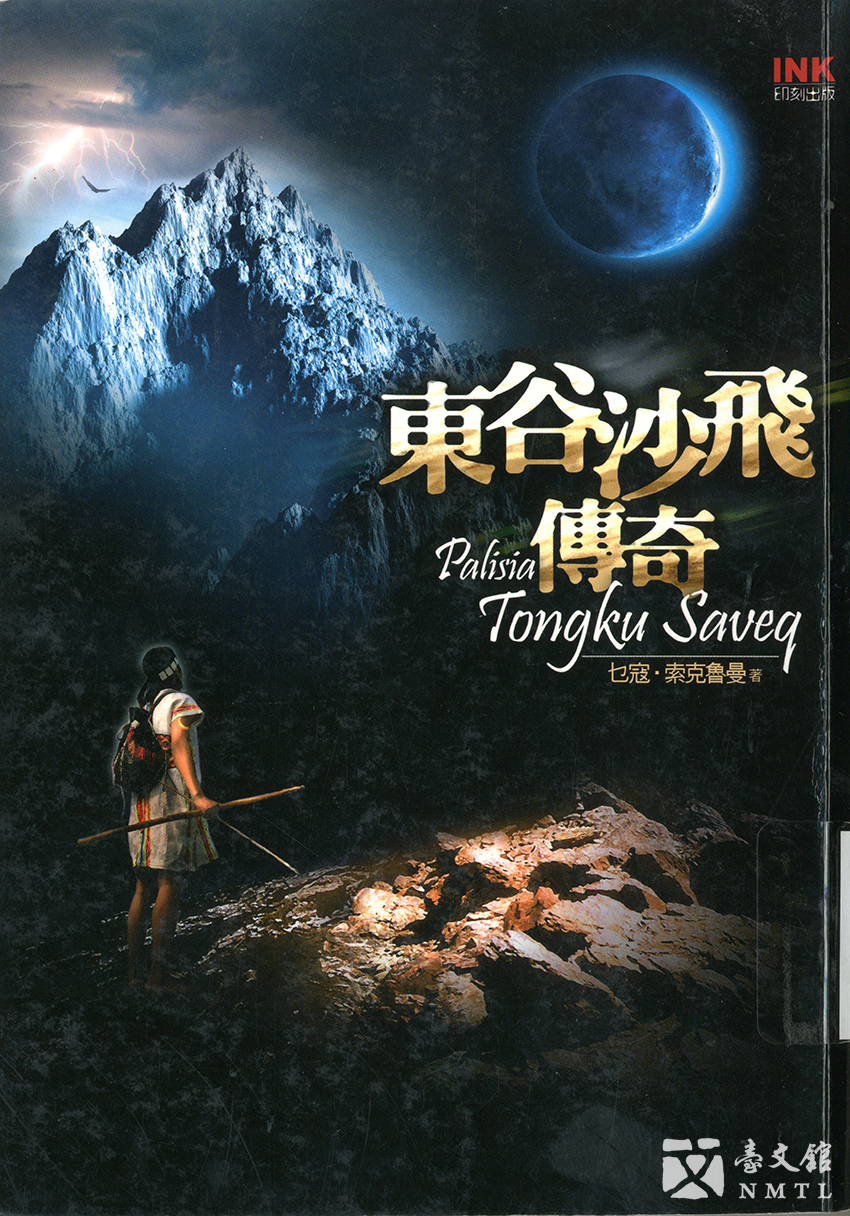
▶︎ Neqou Sokluman. PALISIA TONGKU-SAVEQ. Ink Literature, 2008. (Collection of the National Museum of Taiwan Literature)
Neqou Sokluman (1975- ; Chinese name Quan Zhen-rong) is a Bunun from Kalibuan, Nantou. After graduation, he returned to his hometown to establish the Alpine Guide Alliance to promote the indigenous alpine eco-tourism industry. In 2008, Neqou published PALISIA TONGKU-SAVEQ based on the legend of the Great Flood in Bunun mythology. He once remarked that he was inspired by Tolkien's THE LORD OF THE RINGS to write a fantasy to recount his tribal experience. Tongku-Saveq is the Bunun name of the Jade Mountain, Taiwan's highest peak.
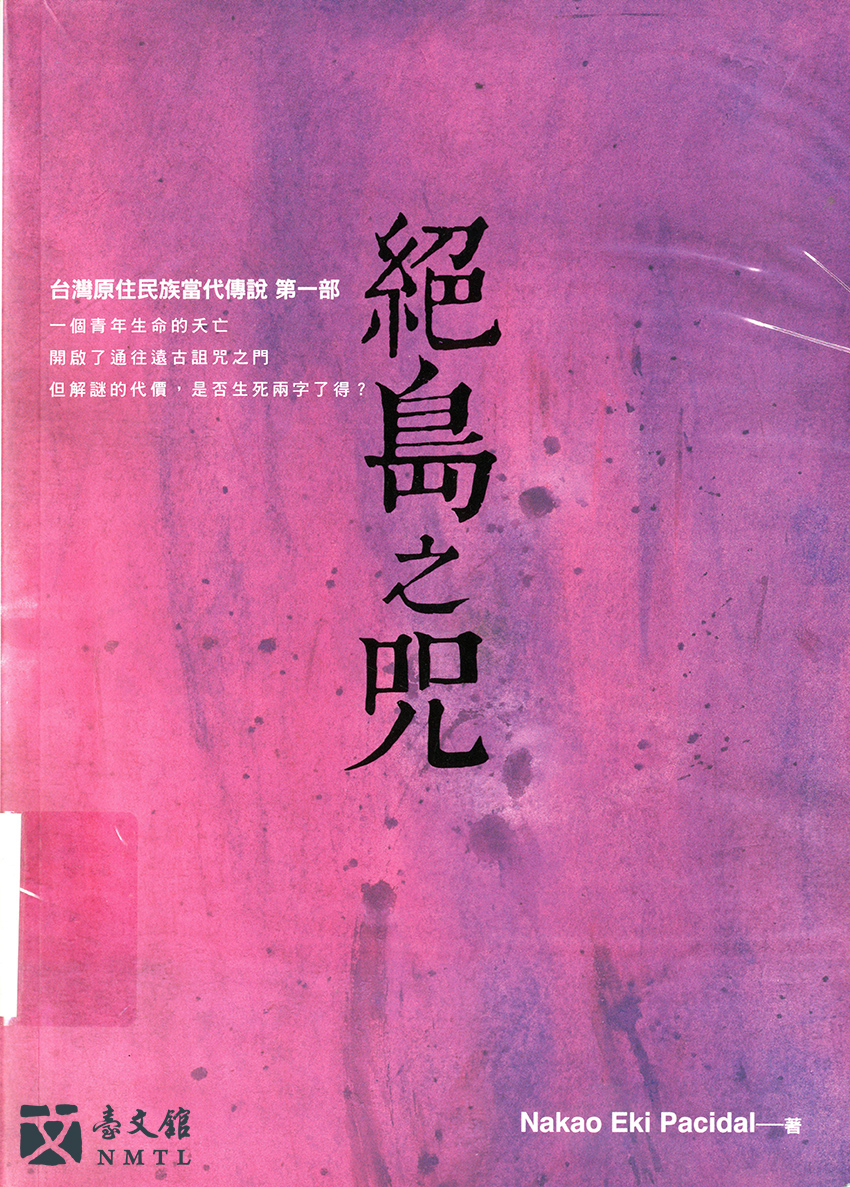
▶︎ Nakao Eki Pacidal. THE OBLITERATING CURSE TO THE ISLAND: CONTEMPORARY LEGENDS OF TAIWAN'S INDIGENOUS PEOPLES|PART I. Avanguard, 2014. (Collection of the National Museum of Taiwan Literature)
Nakao Eki Pacidal is an Amis from the Tafalong Community. She currently resides in the Netherlands as a Ph.D. student in history at Leiden University, and engages in research, translation, and transnational aboriginal movements. Themed around "curse," Nakao's 2014 work, THE OBLITERATING CURSE TO THE ISLAND, began with the Tsou flood myth and used it as the motivating story for a Bunun to set out to the Sky Lake on an investigation but who died accidentally. The death then led to several Bunun youths searching for the existence of the curse, and eventually found a way to reverse the curse and then coexist with it.
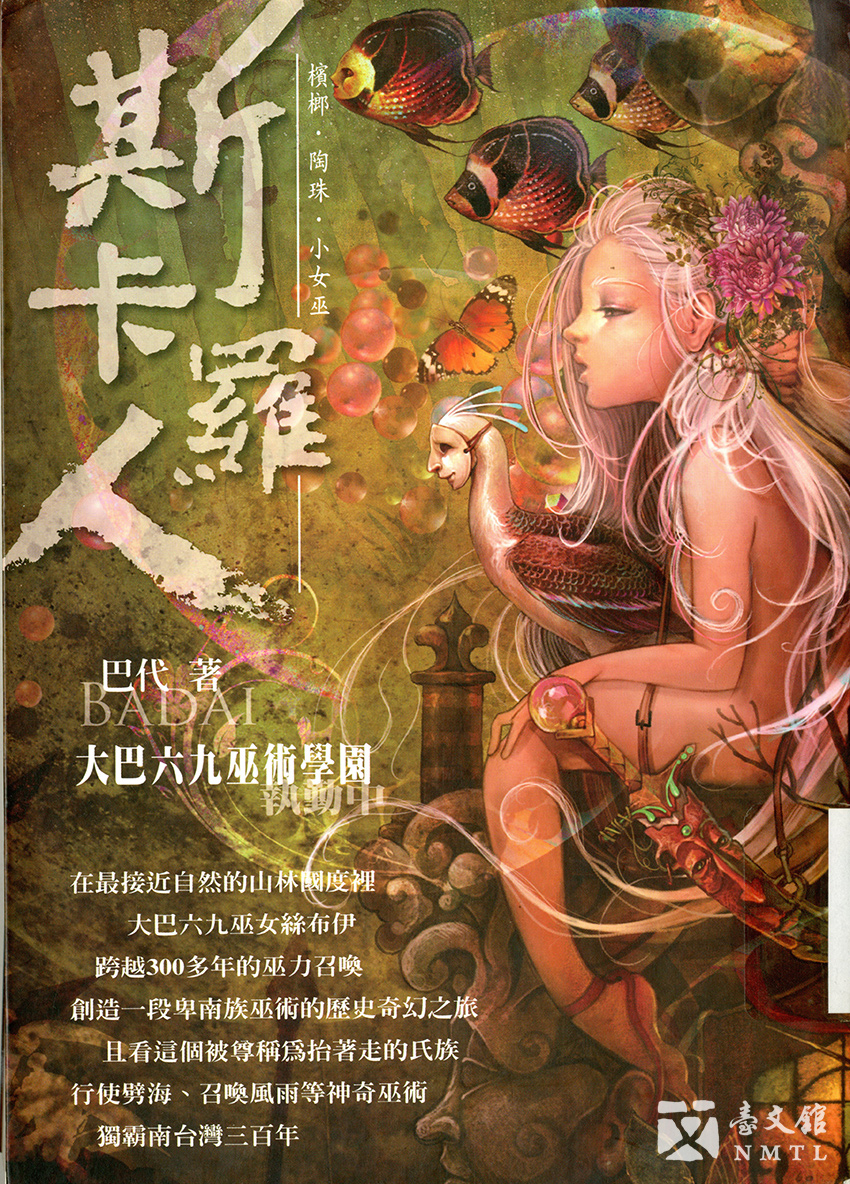
▶︎ Badai. SEQALU: BETEL NUTS, CERAMIC BEADS, AND THE YOUNG WITCH. Yelu Books, 2009. (Collection of the National Museum of Taiwan Literature)
Badai (1962- ; Chinese name Lin Er-lang) is a Puyuma from Tamalakau, Taitung. His SORCERESS DIGUWAN is a gold-prize winner in the long-form novel category of the 2008 Taiwan Literature Awards. Badai primarily focuses on historical novels that explore the Puyuma culture under historical scenarios, merging historical events with legends and myths. Published in 2009, SEQALU is a historical fantasy about the witchcraft and migration history of the Puyuma told from the eyes of the protagonist Simuy, a Tamalakau witch.
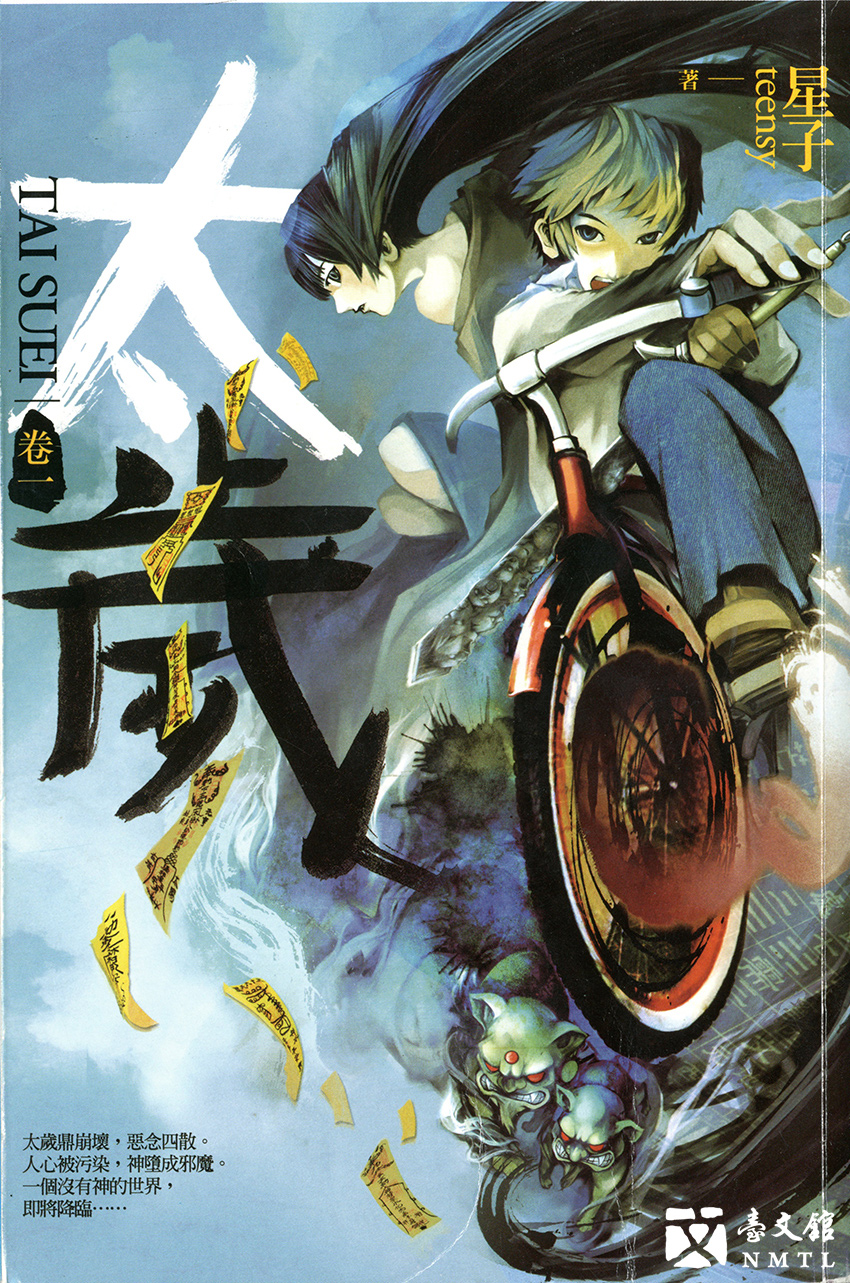
▶︎ Xingzi. TAI SUI. Gaea Books, 2009 1st edition 2nd printing.
Xingzi (1979- ; real name Yan Gong-ming) is a novelist whose writings cover the genres of fantasy, the supernatural, and horror. In 2003, Xingzi started the online novel TAI SUI based on Taiwanese traditional folk beliefs, telling the story of celestial beings degenerating into demons and fairies degenerating into imps after the collapse of the "Tai Sui Pot."
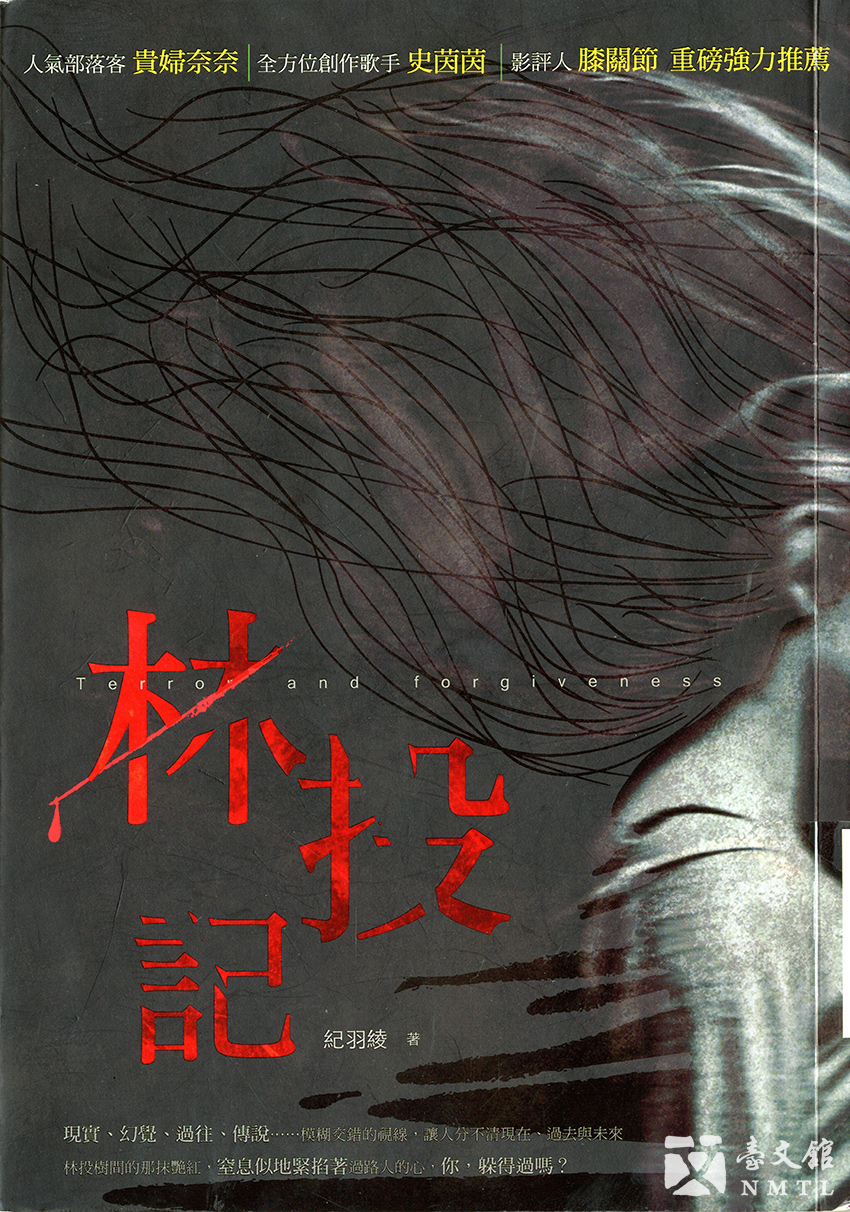
▶︎ Ji Yu-ling. STORY OF LINTOU. Panshi Books, 2015. (Collection of the National Museum of Taiwan Literature)
Ji Yu-ling (1979-) was shortlisted for the first Chinese-Language Film Novel Awards with her novel CITY GUARDED BY ANGELS (2010). The STORY OF LINTOU, published in 2015, is based on the Tainan folktale "Sister Lin Tou." Despite ostensibly being a story about the revenge of a vengeful spirit, this story is in actuality an in-depth reflection on the social issue of land expropriation.
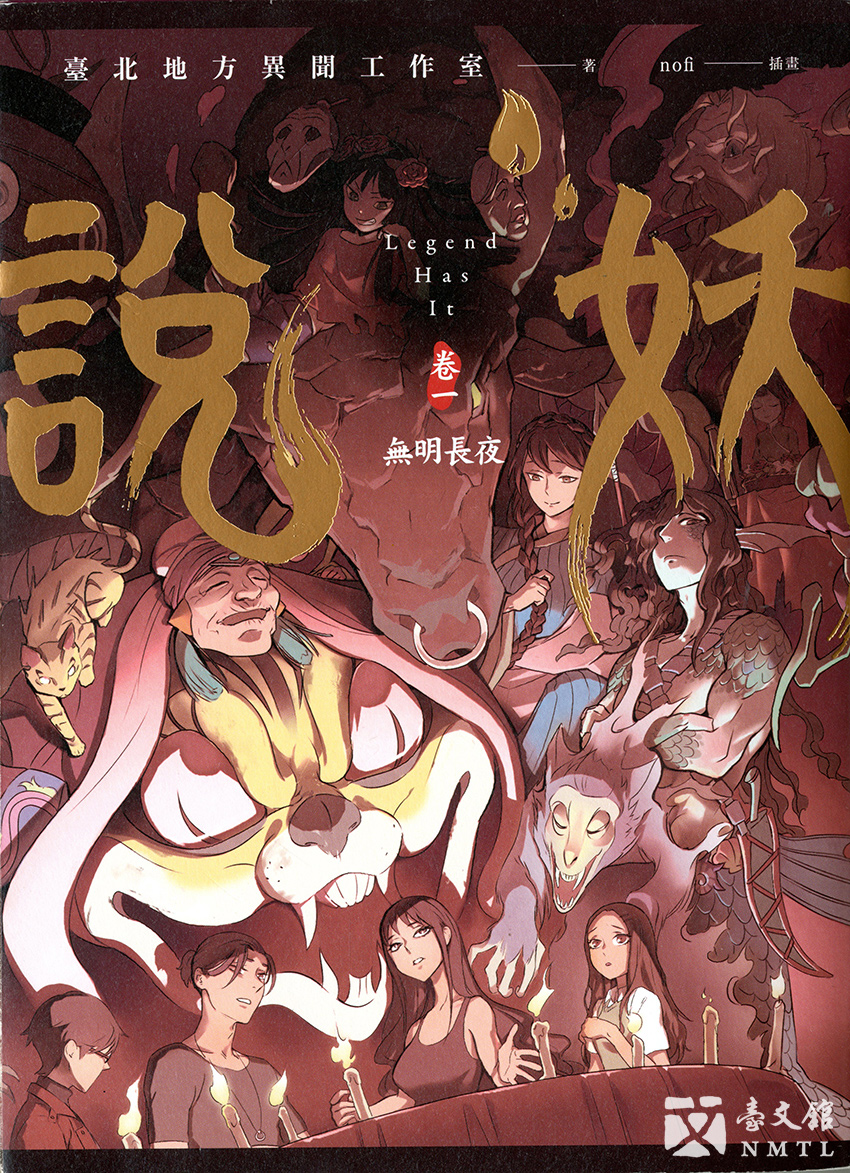
▶︎ Taipei Legend Studio. LEGEND HAS IT, Vol. 1. Gaea Books, 2017. (Collection of the National Museum of Taiwan Literature)
The Taipei Legend Studio has long focused on Taiwanese folklore, history, and monsters in the hope of connecting modern people with lost Taiwanese history through entertaining stories and reality games. The studio created the universe of LEGEND HAS IT in 2017 and has since followed up with the release of a related board game and novels. The book, authored by Xiaobo (Yang Hai-yan), Qingxiang (Yang Yun), Chang'an (Xie Yi'an), and Xiaoxiangshen (Luo Chuan-qiao), combines elements of Taiwanese monsters and puzzle-solving with current affairs.
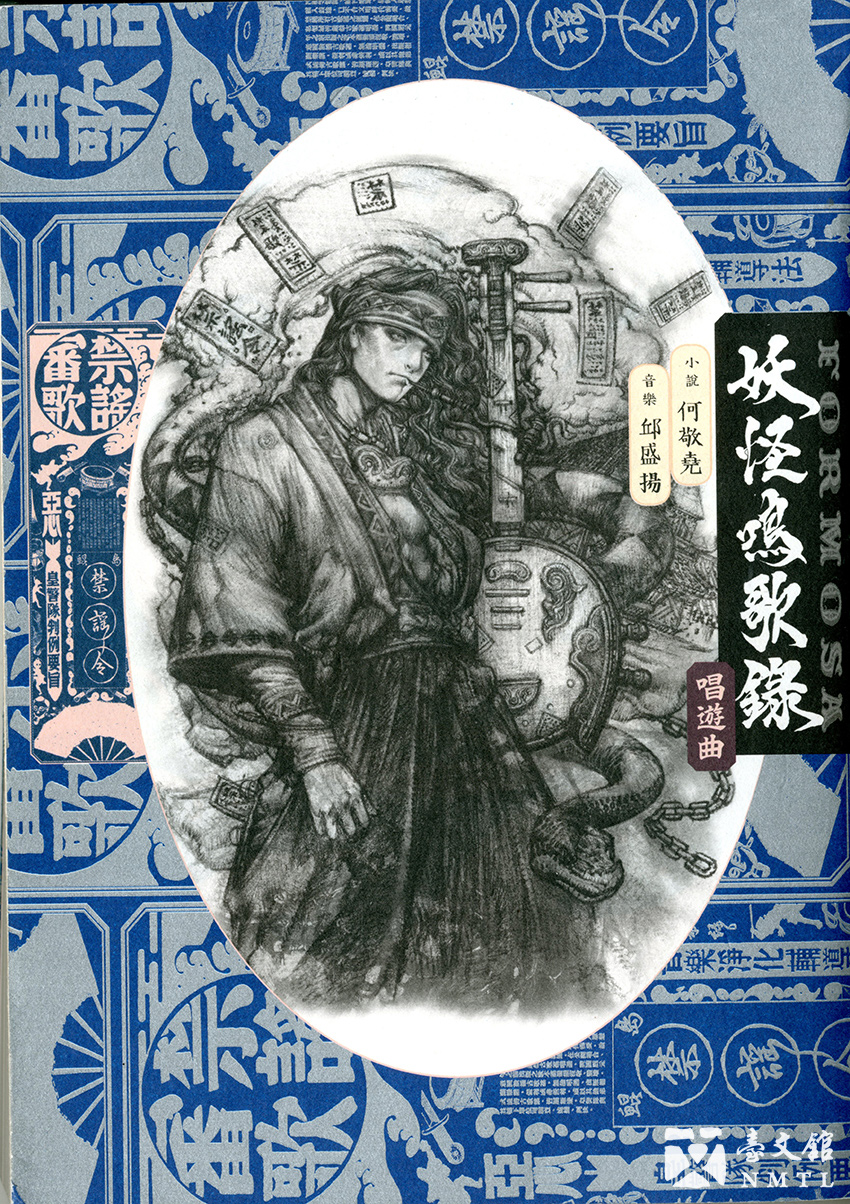
▶︎ Ho Ching-yao. INTONING MONSTERS OF FORMOSA: MELODIES. Chiuko, 2018. (Collection of the National Museum of Taiwan Literature)
Ho Ching-yao (1985-) is dedicated to studying legends related to Taiwanese monsters. His writings cover fantasies and historical investigations. The fantasy novel, INTONING MONSTERS OF FORMOSA, with magical and adventurous storylines involving Taiwan's monsters, is a cross-industry collaborative effort with musician Sheng-Yang Chiu that was adapted into a mobile game app in 2018.
Supernatural Beings VS. Multimedia Art
The adaptation of paranormal stories is not something that started in our modern era. For instance, the time-honored Legend of Sister Lin Tou was adapted into a movie as early as 1956, and then again in 1979 and 1988, which shows how popular it has remained. In the 1980s, the popularity of the legend of an infant spirit also inspired a similarly themed movie in 1989.
Classic ghost legends have always been a good source for horror movies. One of the most renowned examples is THE TAG-ALONG, released in 2015 and 2017. Monsters and ghosts of the modern era appear in multivariate forms with the help of multimedia art.
Creators incorporate elements from local legends into their illustrations and comics to tell stories about their homeland using vivid images. Taiwanese ghosts and monsters have also woven their way into board games, computer games, and mobile game apps, becoming entertainment elements along the way. In terms of music, examples of ghost-story-inspired adaptations include RELENTLESS RECURRENCE by ChthoniC. With the rising monster trend in Taiwan in recent years, there has been a gradual increase in the number of similarly themed music on the market.
